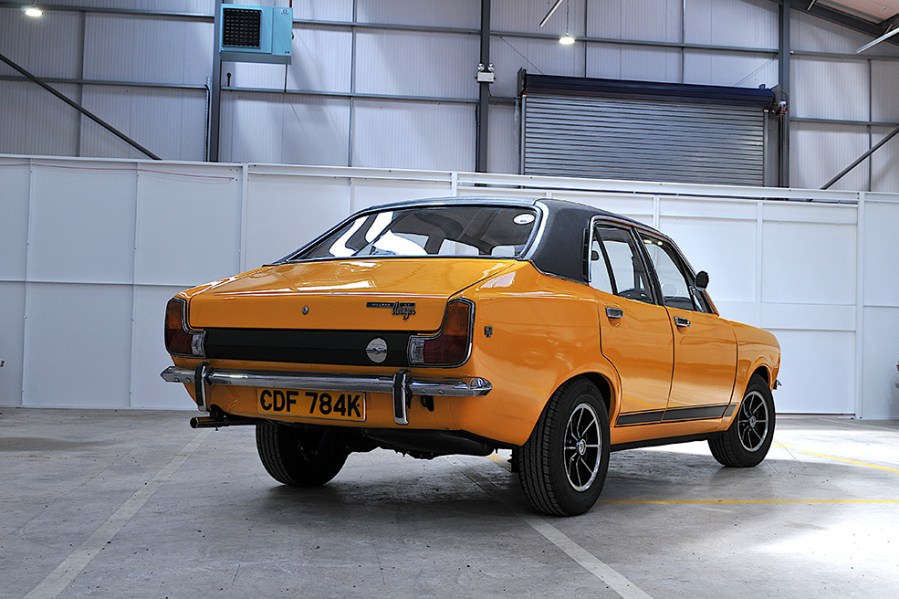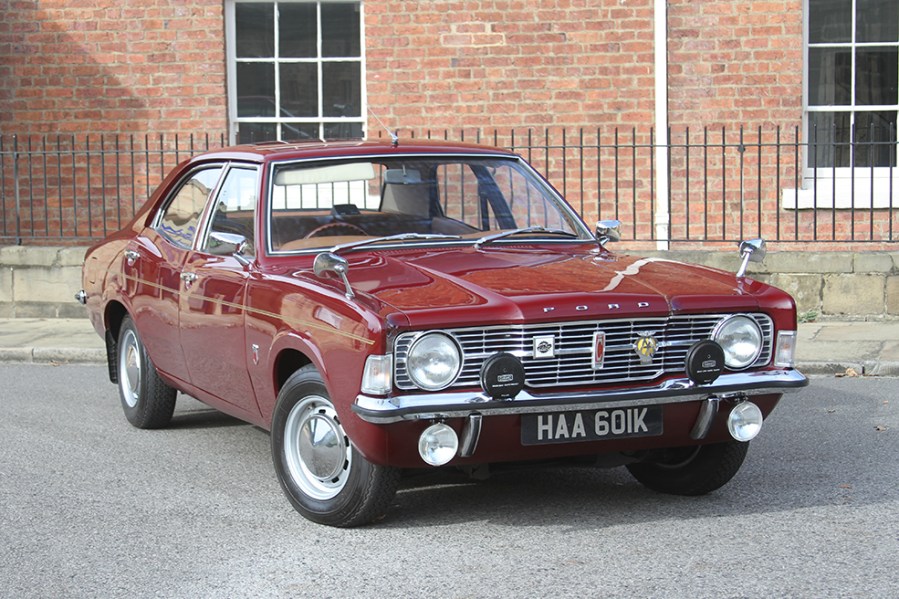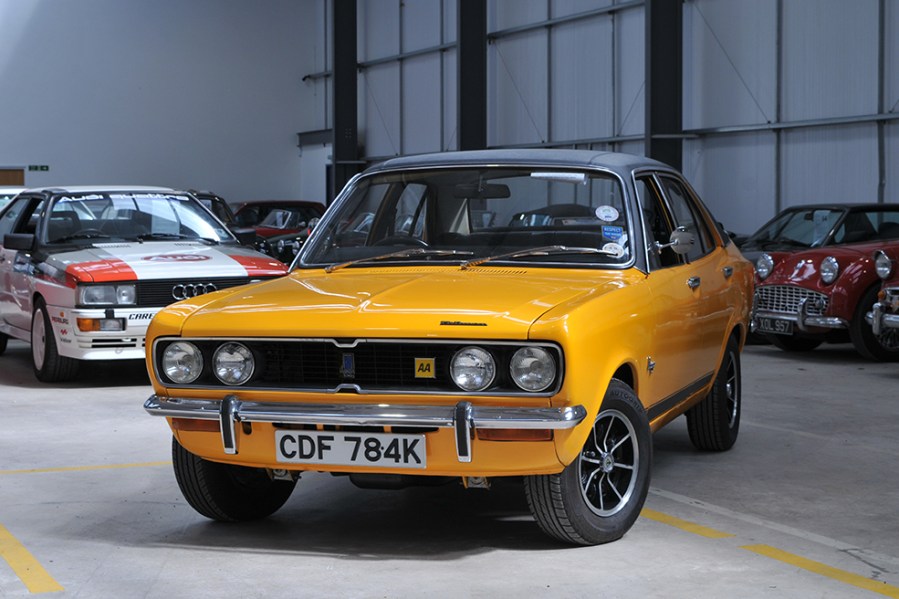Combining Coke-bottle styling with a traditional mechanical layout, the Hillman Avenger is a 1970s icon. Here’s how to buy a good one today
Images: Paul Wager
The British-built Hillman Avenger carries the dubious honour of having had three different identities during its long career, starting off life as a Hillman in 1970 before being rebadged as a Chrysler in 1976, only to become a Talbot for its final couple of years in production. By the time the last example rolled off the line in 1981, almost 790,000 Avengers had found buyers.
Even by the standards of 1970, the rear-wheel drive Avenger was conventional in its layout, featuring MacPherson struts up front, coil springs and a live axle at the rear, overhead-valve engines and a four-speed transmission. Rootes wasn’t alone in playing it safe, but the Avenger’s long run meant that by the time it went out of production, it was seen as distinctly old-fashioned against a new generation of front-wheel drive rivals like the Ford Escort Mk3 and Triumph Acclaim.
The Hillman Avenger was always a pleasant car to drive, with good road manners, decent cornering, sharp steering and an eager nature to its performance, particularly the twin-carb GT. Five-door estates arrived in 1972, while late 1973 saw the initial 1250 and 1500 Avengers replaced by 1300 and 1600 models, bringing a useful boost in power. Most desirable of all the Avengers was (and still is) the short-lived, rally-inspired Tiger of 1972–73, featuring a big-valve, twin-Weber version of the GT engine for an output of 93bhp.
The Avenger was no more rust-prone than any of its rivals from the 1970s, but that still means a relatively low survival rate today. This wasn’t the bestselling cars in its sector when new, and it’s now a relatively scarce sight even at classic car events. Track down a decent survivor and you’ll get to enjoy a practical family holdall and an easy ownership experience.
Bodywork
More than 40 years on from the final Hillman Avenger being built, most survivors will have had remedial or restoration work carried out, albeit to varying standards. It’s important that you check the quality of any previous work, paying particular attention to fresh paintwork (is it hiding copious quantities of filler?) and suspicious looking underseal.
Whether a car has been restored or is claimed to be original, you should be vigilant. Starting with each front wing, look carefully at the area around the headlamp for signs of bubbling paintwork and rust, as well as the trailing edge and the bottom of the wing behind the front wheel. Rear arches are also prone to rust, as are the lower rear corners, front and rear valances, and inner and outer sills. Whilst you’re underneath checking the sills, be sure to inspect the jacking points, the bottom of each A-post and the adjoining chassis rail. The bottom of the B-post is also a rot spot, where it meets the sill.
You need to check carefully under the bonnet, starting with the box section between the front valance and the panel under the radiator, as well as the join between the inner wings and the bulkhead. Pay particular attention to the steel around the MacPherson strut tops, looking not only for rot but also for signs of previous welding. The front of the chassis rail around the strut mounting and the chassis leg near the engine crossmember mount are also vulnerable.
New old-stock genuine Rootes/Chrysler panels aren’t easy to find, although they do sometimes appear on eBay. Expressed Steel Panels offers a range of Avenger panels and repair sections, but make sure you do your homework; unless you’re restoring a Tiger, you might find the cost of any repairs exceeding the end value of the car. Early front wings, for example are listed at around £374 each including VAT, inner and outer sills are approximately £131 and £217 respectively, half-floor sections are just under £341, while lower door skin repair sections are roughly £143. Bear in mind, too, that there’s a manufacturing lead time of several months on larger panels, which means planning ahead if you’re taking on a project.

Engine and transmission
Whichever Avenger you buy, its simple all-iron OHV four-cylinder engine is a generally robust unit when maintained correctly. These cars are capable of taking high mileages in their stride when serviced regularly, but can inevitably suffer when neglected. Make sure you carry out the usual checks for wear, including blue smoke from the exhaust or from under the oil filler cap, while any hint of bearing knock from deep inside the engine is a major cause for concern.
These cars aren’t renowned for head gasket failure but it’s not unheard of, so make sure you check for signs of oil in the coolant and vice-versa. Also look for evidence of any previous overheating issues, and make sure that the car runs at a normal operating temperature. Timing chain rattle isn’t something to be overly concerned about unless it’s excessive.
If you’re lucky enough to be buying a GT or even a Tiger, the setting up of its twin carburettors can be tricky, so make sure it’s running smoothly and evenly. Choke cables on twin-carb Avengers are also prone to failure.
The Avenger was available with three-speed automatic transmission as an extra-cost option, but it wasn’t a particularly popular choice and surviving examples are now few and far between. The standard four-speed manual gearbox is tough and reliable, although long-term misuse can cause worn synchromesh, particularly on second gear. High-mileage cars can also suffer from a whining back axle. Make sure there are no signs of clutch slip (particularly when driving uphill or when the car’s under load), while any car suffering from a stiff clutch pedal is likely to have a stretched cable that needs replacing.

Suspension, steering and brakes
The Avenger’s simple (but effective) spec helps when it comes to both maintenance and the buying process, and a thorough test drive should help to reveal the state of the suspension. Any Avenger tends to roll a little when cornering, but if it feels excessive you can be sure the front MacPhersons struts are worn and probably the rear dampers, too. While carrying out suspension checks, you should be looking for broken or severely rusted springs, as well as play in all balljoints.
The good news is that Spax adjustable dampers are available from companies like DC Performance, enabling you to drastically improve your Avenger’s handling and ride. It’s not a cheap conversion (front and rear dampers cost more than £160 and £130 each respectively) but the difference can make the expenditure worthwhile if you plan to keep the car long-term.
The disc/drum braking set-up is equally straightforward, so you just need to carry out the usual checks for scored or warped discs, worn pads and shoes, leaking master/slave cylinders, frayed hoses and so on. The state of the brakes will be a good indication as to the car’s recent care, so look out for signs of maintenance. Service items are readily available, but again you might see an opportunity for a slight upgrade thanks to EBC offering various front disc/pad kits from around the £250 mark.
The Avenger’s rack and pinion steering should feel sharp and precise by 1970s standards; if it feels strangely vague, you’ll probably be looking at a new steering rack.

Interior, trim and electrics
Given the Avenger’s 11-year production run, it’s not surprising that its interior was treated to various upgrades, including changes in dashboard design. Whichever version you’re buying, though, the same basic checks should be carried out.
The vinyl upholstery of an early car will be far more hard-wearing than the full-width cloth seat facings fitted to later Chrysler and Talbot versions, although any example can be showing wear and tear. Vinyl seats can suffer from splits along the edges in particular, while cloth trim can wear into holes (particularly on the driver’s seat) even on relatively low-mileage cars. Check for obvious damage, and don’t be surprised if the front seats show signs of sagging.
The top of any Avenger dashboard can be prone to cracking, and it’s not unusual to see sagging or damaged door cards. You should also check the headlining for splits and wear, while the carpets also need inspecting – including underneath, giving you a good opportunity to double-check the floorpans and inner sills.
Although well-equipped by family saloon standards of the 1970s, no Avenger is exactly over-complex – so when it comes to the electrics, it’s just a case of making sure the switches, lights and dials are all in working order.

Hillman Avenger: our verdict
The Avenger often popped into the UK’s Top 10 bestsellers list during its first few years on sale, although it was never popular enough to threaten the dominance of rivals from Ford and British Leyland. That’s a shame, as this was a worthy design that deserved to sell in larger numbers. Practical, roomy and reliable (when well-maintained), the Avenger was also a pleasing car to drive… and remains so today.
Find a well-preserved survivor and you’ll have an enjoyable ownership proposition on your hands, assuming you can find one for sale that matches your requirements. Avengers aren’t exactly commonplace in the classifieds or online, so you’ll need to be patient, particularly if you crave a seldom-seen example such as an estate or any of the various limited-edition saloons that Rootes/Chrysler offered.
If you really want to, you can spend £20,000–25,000 (or more) on a Hillman Avenger, although that kind of price tag is restricted to an early Tiger in decent condition. As with the Avenger’s successor in rallying, the Sunbeam Lotus, a Tiger is in a different league from the rest of the range when it comes to values.
Most Avenger buyers will get away with a vastly smaller budget, particularly if they’re happy with a car in need of work. Projects can sometimes be seen from as little as £1500, while £2500 might buy an Avenger saloon that’s in need of some TLC but is fairly sound. Increase your budget to £3500–4500 and you’ll eventually be able to buy an Avenger that’s tidy, presentable and has years of life left in it, while even an immaculate example in a private sale is unlikely to achieve much more than £5500–6000. Some people will pay more for the right car, though, hence the near-£7000 achieved for a 1979 Avenger 1600 GLS at a Mathewsons auction in October 2023.

Hillman Avenger timeline
1970
Avenger four-door saloon launches, with two engine options; twin-carb GT arrives before year end
1972
Five-door estate version of the Avenger debuts; rally-influenced Tiger is previewed
1973
Two-door saloons go on sale; 1250 and 1500 engines replaced by 1.3- and 1.6-litres
1976
Chrysler branding replaces Hillman; Avenger facelift brings Alpine-like headlamps, restyled rear and redesigned dashboard
1979
Chrysler Europe buy-out by PSA sees Avenger rebadged as a Talbot
1981
The closure of the Linwood plant in Renfrewshire, Scotland means the end of Hillman Avenger production
Hillman Avenger alternatives
Ford Cortina Mk3
Like Rootes, Ford’s family saloon for the ‘70s aped Americana in its styling, while also growing significantly in size over its predecessor. It doesn’t handle like the Avenger, but is comfier, roomier and more plentiful.

Morris Marina
The much-maligned Marina makes for a great ‘70s classic you can regularly use, blending comfort and decent enough cornering with great value and simple mechancials. Parts support is increasingly strong and the A-Series engine is a great known quantity.





















